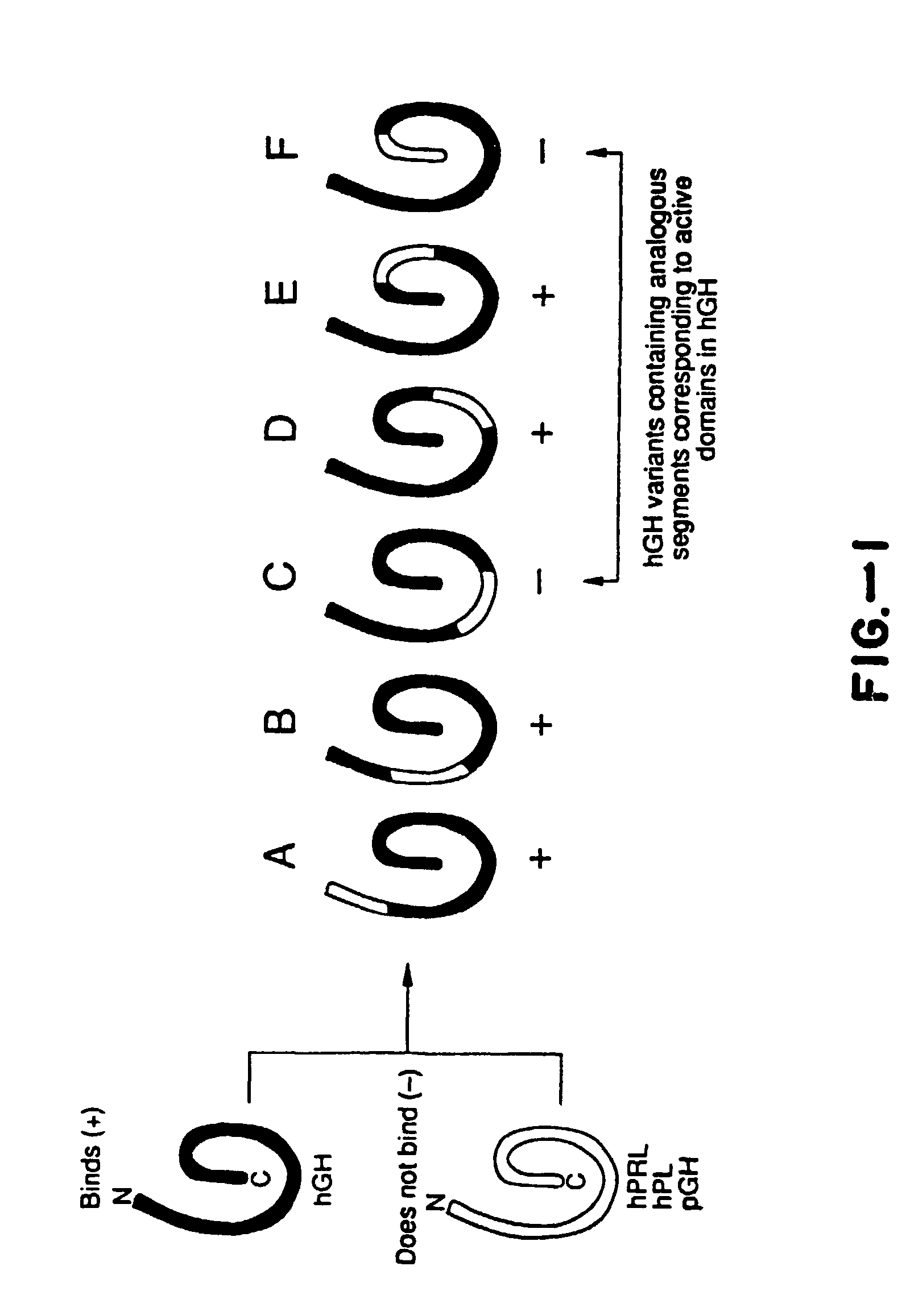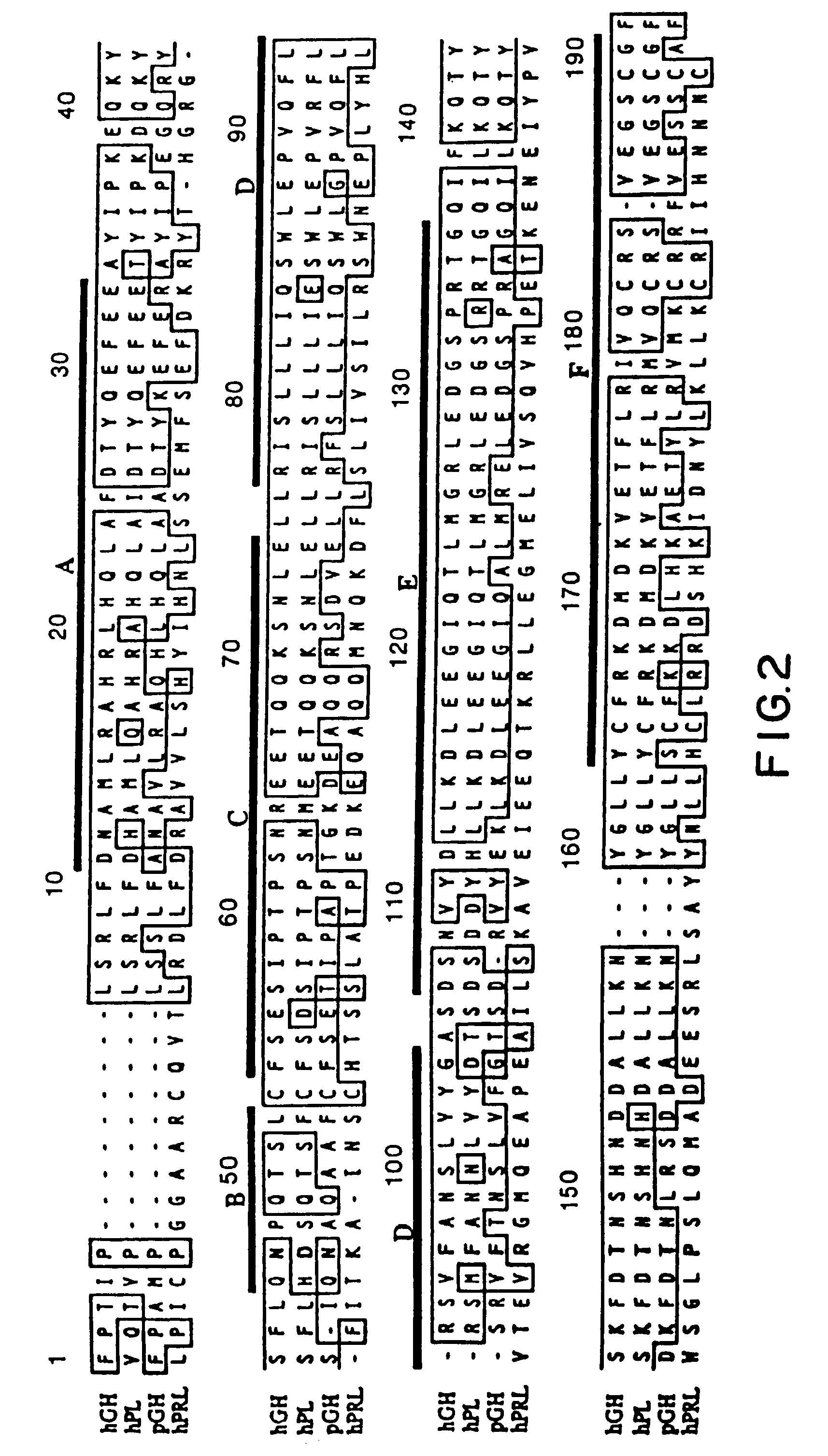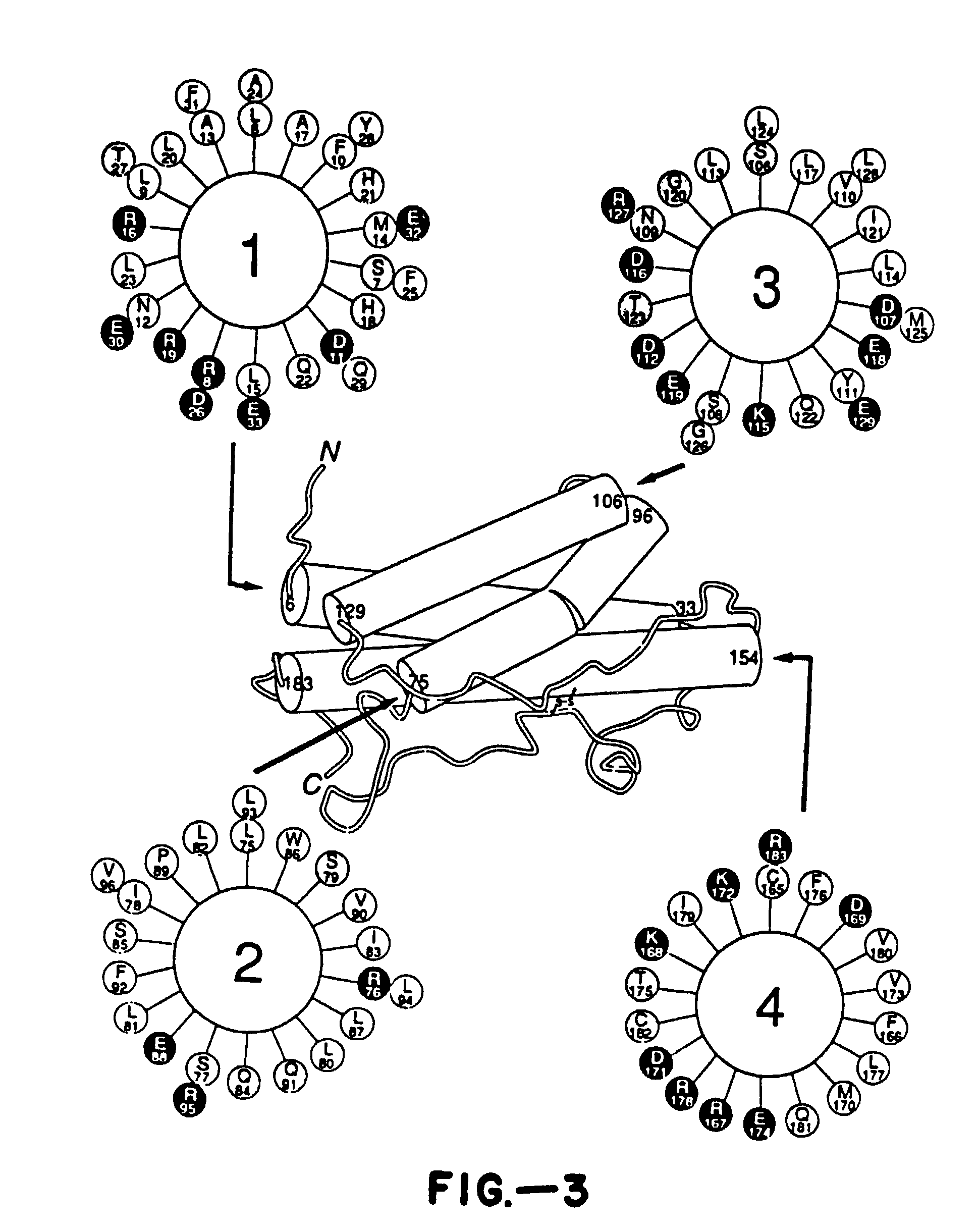Growth hormone variants
a growth hormone and variant technology, applied in the field of growth hormone variants, can solve the problems of difficult to utilize such methods to systematically study a given polypeptide, methods do not provide predetermined and methodical sequential, and cannot be used to confirm methods, etc., to achieve the effect of increasing potency
- Summary
- Abstract
- Description
- Claims
- Application Information
AI Technical Summary
Benefits of technology
Problems solved by technology
Method used
Image
Examples
example 1
hGH Mutagenesis and Expression Vector
[0142]To facilitate efficient mutagenesis, a synthetic hGH gene was made that had 18 unique restriction sites evenly distributed without altering the hGH coding sequence. The synthetic hGH DNA sequence was assembled by legation of seven synthetic DNA cassettes each roughly 60 base pairs (bp) long and sharing a 10 bp overlap with neighboring cassettes to produce the 405 bp DNA fragment shown from NsiI to BglII. The ligated fragment was purified and excised from a polyacrylamide gel and cloned into a similarly cut recipient vector, pB0475, which contains the alkaline phosphatase promoter and StiII signal sequence (Chang, C. N., et al. (1987) Gene 55, 189), the origin of replication for the phage fl and pBR322 from bp 1205 through 4361 containing the plasmid origin of replication and the P lactamase gene. The sequence was confirmed by dideoxy sequence analysis (Sanger, F., et al. (1977) Proc. Natl. Acad. Sci. USA 74, 5463).
[0143]pB0475 was construct...
example 2
Homologous Recombinants of hGH and pGH
[0146]A random hybrid library containing various N-terminal lengths of hGH linked to the remaining C-terminal portion of porcine growth hormone (pGH) was constructed by the method of random recombination of tandemly linked genes. Gray, G. L., et al. (1986) Bacteriol. 166, 635.
[0147]The EcoRI site of pt0475 was removed by restricting the plasmid with EcoRI, filling in the cohesive ends by addition of DNA polymerase and dNTPs, and ligating the plasmid back together. A new EcoRI site was then introduced just following the 3′ end of the hGH gene. This was accomplished by subcloning the 345 bp BglII, EcoRV fragment of hGH-4R, which contains such an EcoRI site, into a similarly restricted vector from the EcoRI− pB0475 construction. The pGH gene (Seeburg, P. H., et al. (1983) DNA 2, 37) was then introduced just downstream and adjacent to the 3′ end of the hGH gene in this construction. This was accomplished by doping an EcoRI, HindIII (filled in) fragm...
example 3
Expression and Purification of Soluble Human Growth Hormone Receptor from E. coli
[0149]Cloned DNA sequences encoding the soluble human growth hormone receptor shGHr (Leung, D. W., et al. (1987) Nature 330, 537) were subcloned into pB0475 to form pJ1446 (see FIGS. 11 and 12).
[0150]The vector pC1S.2 SHGHR (Leung, D. W., et al. (1987) Nature 330, 537) was digested with XbaI and KpnI and the 1.0 kb fragment containing the secretion signal plus the 246 codon extracellular portion of the hGH receiptor was purified (Maniatis, T. et al. (1982) in Molecular Cloning, Cold Springs Harbor Laboratory, New York). This fragment was ligated into similarly cut M13 -mp 18 and single-stranded DNA for the recombinant gene was purified (Messing, J. (1983) Methods in Enzymology, Vol. 101, p. 29). Site-specific mutagensis (Carter, P., et al. (1986) Nucleic Acids Res. 13, 4331) was carried out to introduce an NsiI site at codon +1 using the 18-mer oligonucleotide, 5′-A-AGT-GAT-GCA-TTT-TCT-GG-3′ (SEQ ID NO...
PUM
| Property | Measurement | Unit |
|---|---|---|
| Molar density | aaaaa | aaaaa |
| Molar density | aaaaa | aaaaa |
| Molar density | aaaaa | aaaaa |
Abstract
Description
Claims
Application Information
 Login to View More
Login to View More - R&D
- Intellectual Property
- Life Sciences
- Materials
- Tech Scout
- Unparalleled Data Quality
- Higher Quality Content
- 60% Fewer Hallucinations
Browse by: Latest US Patents, China's latest patents, Technical Efficacy Thesaurus, Application Domain, Technology Topic, Popular Technical Reports.
© 2025 PatSnap. All rights reserved.Legal|Privacy policy|Modern Slavery Act Transparency Statement|Sitemap|About US| Contact US: help@patsnap.com



